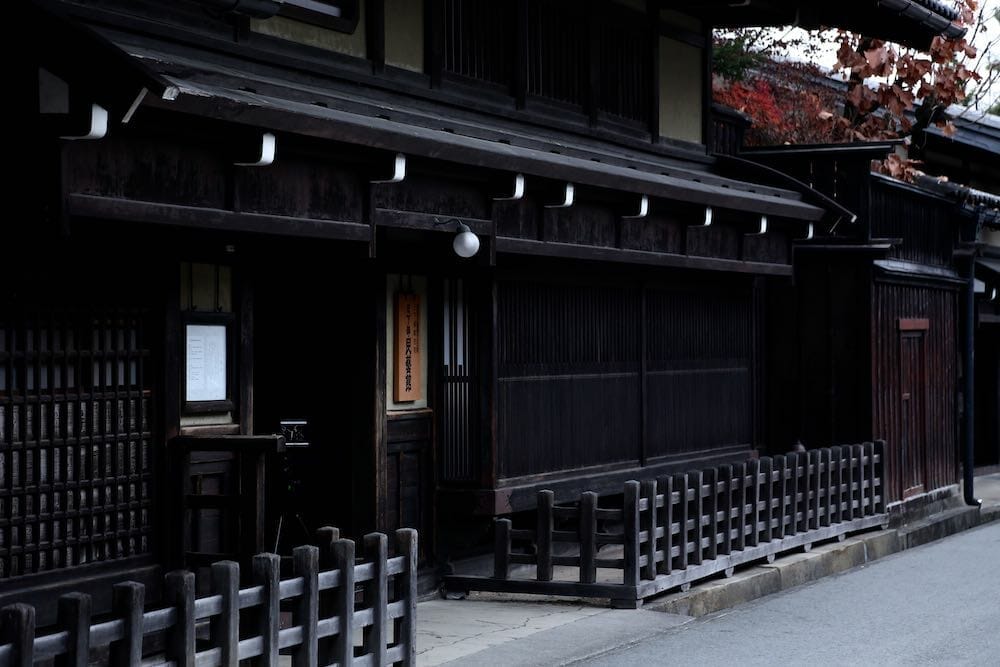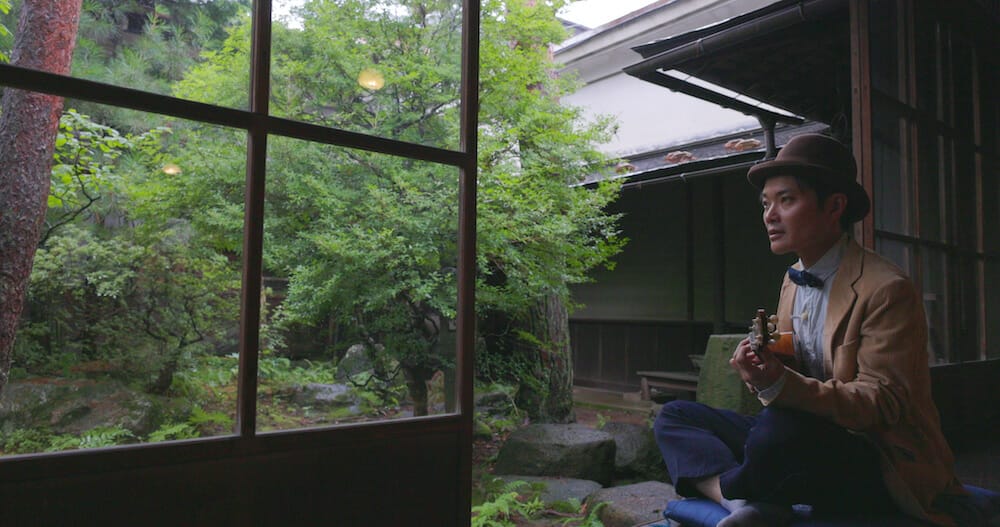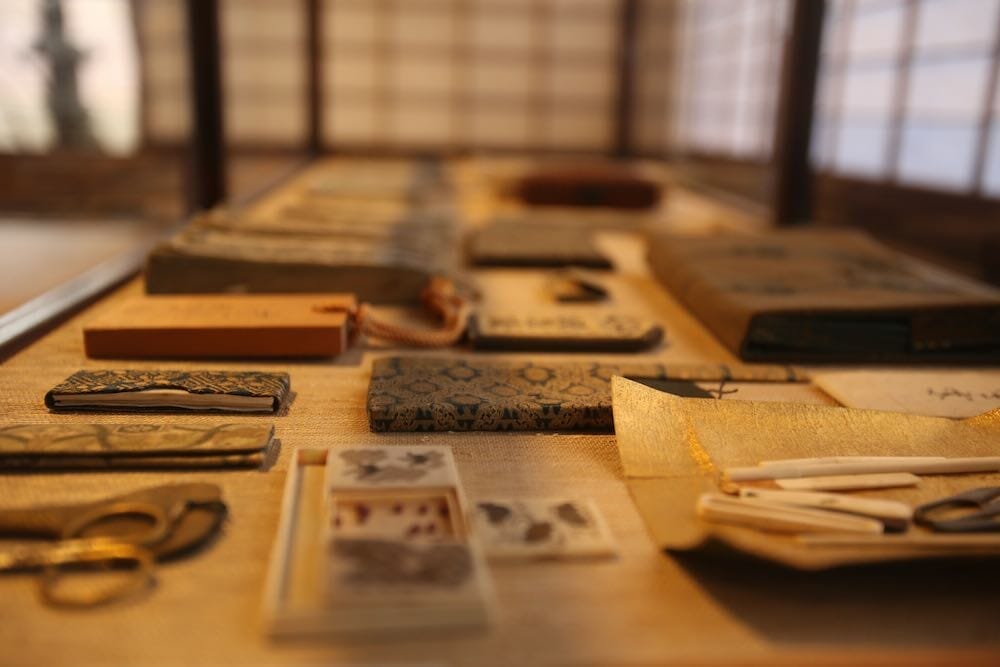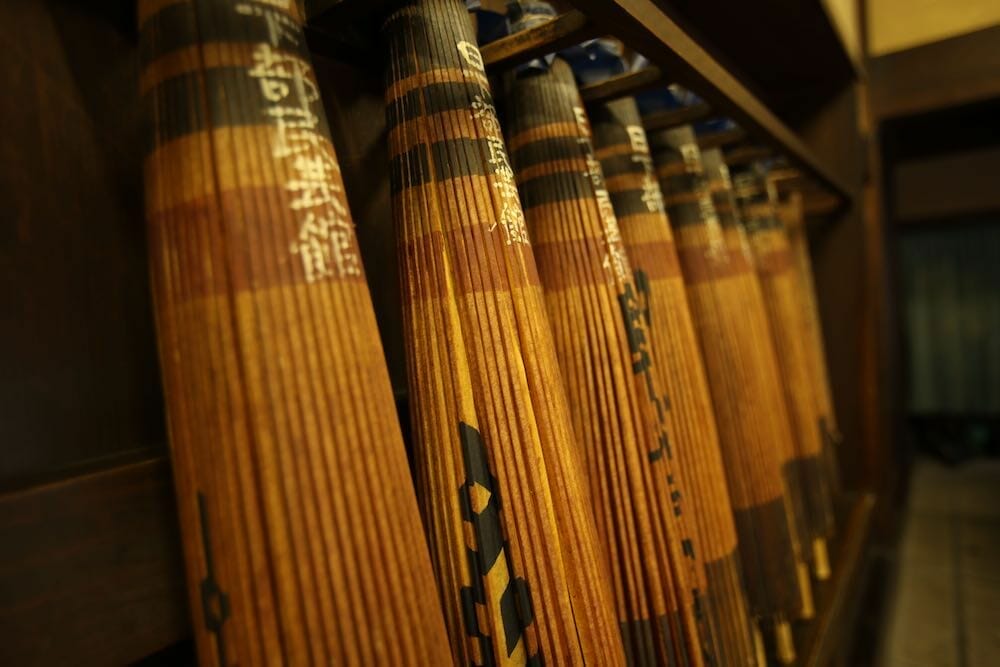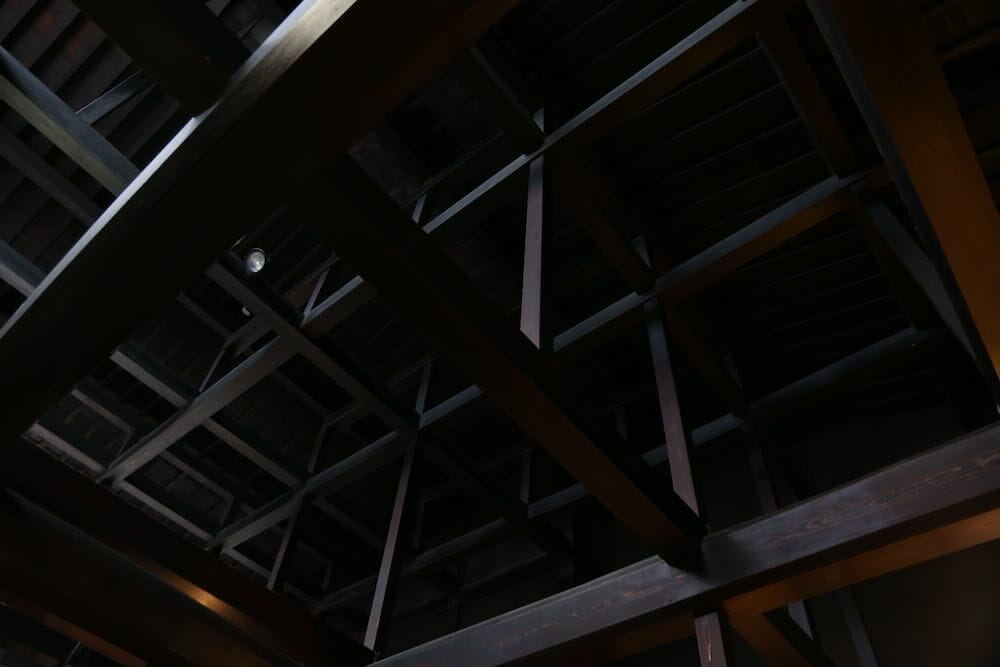Click here to read more Picture This Post Japonisme stories.
Our tour begins with a song — the first few notes of the Bossa Nova classic, Girl from Ipanema, unfold over sweeping aerial footage of dark, dense green forest and sprawling mountainscape. A voice begins to sing in Japanese, and the music leads us deeper into the mountains for our first hazy glimpse of the city below, where the blocky white buildings of modern-day Takayama blur together, softened by layers of fog.
The camera pulls us steadily downwards and into the former merchants’ quarters of Old Town Takayama, where dark, wood-gridded facades dominate the traditional-style buildings along the street. In the next scene, our singer is revealed — he sits cross-legged on the floor of one of these dark wooden interiors, strumming a small guitar and staring out of a large opening in the wall into a leafy green garden. Soft sunlight falls through the trees and illuminates his fine features. His calm gaze reflects the quiet architectural grace of the Kusakabe Heritage House, a building that holds 150 years of history and a dynamic cultural afterlife within its walls.
Mika, our host and guide, reprises her role for this latest virtual tour from Japanese tour service Japonisme. She takes us for a deep dive into the building’s origins and role within the Takayama community, her commentary accompanied by a mix of historic images and illustrations, prerecorded video and interview segments, short quizzes and discussion time, and musical interludes from a local performer.
She first orients us into the town of Hida, Takayama, where the house is located – five hours west of Tokyo and deep within the forested mountains of the Japanese Alps. She explains how the region garnered a national reputation for its highly skilled master carpenters – hida no takumi – one of whom would later design and build the 19th century home for the Kusakabe, one of the wealthiest merchant families in Takayama.
Resuming the prerecorded video footage, Mika guides us into the home, through cloth hangings that bare the family crest. Here we get a view of the high ceilings, tatami flooring, and large, open spaces segmented by sliding paper doors — all dominated by dark segments of deep red wood and a complex network of wood beams that take up space overhead. We see vestiges of the building’s 19th-century life — a stone kettle suspended over a sunken hearth — alongside glass display cases containing historical artifacts, evidence of its modern-day role as a museum and public cultural resource.
Japonisme’s KUSAKABE HERITAGE HOUSE TOUR Reveals History and Afterlife of 19th Century Merchant Home
Mika explains how the family staked their claim in the early days of Takayama, selling tea on a small scale, then gradually expanding their business to sell medicine, lumber, and other goods in larger metropolitan cities. Their accumulated wealth and resources, specifically that of high-quality lumber, allowed them to build one of the largest and most architecturally dynamic homes of the city’s merchant class. Here, Mika skillfully threads the family’s story into the larger narrative of Japanese history. You, too, might find satisfaction in how these specific details connect to the country’s broader political and cultural developments.
In following segments, Mika showcases artifacts the family has preserved over the years and discusses the House’s current role as a performing arts venue and mingeikan, or folk art museum. An interview with the museum’s curator, a member of the Kusakabe family, reveals the philosophy behind the preservation of local, handcrafted objects of everyday use, highlighting their distinction from fine art and the insight they provide into minority cultures. Accompanying footage gives an up-close look at the unique furniture, tea sets, woven baskets, embroidered textiles, delicately painted ceramics, and wooden netsuke – small, intricately carved sculptures just 1-2 inches tall — that populate the House’s collection.
For this writer, loud music in some of these later segments made it difficult to hear Mika’s commentary, resulting in less of the clarity and richness of detail that characterized the first half of the tour.
Still, this tour provides an interesting lens through which to learn about Takayama culture, and Japanese history at large. And, as with other Japonisme tours, you have the unique opportunity to communicate and learn from someone with vast knowledge of local and national Japanese history, culture, and art. In this writer’s opinion, the designated time for discussion and Mika’s in depth, off-the-cuff responses made it worthwhile, despite the audio issues.
This tour is recommended for anyone with an interest in architecture, art history, and Japanese history and culture.
Those who shy away from traditional textbook-style learning will likely connect with the tour’s visual and interactive presentation style, with its vivid use of imagery and hyperfocus on specific artifacts, places, and moments in history.
RECOMMENDED
Nominate this for The Picture This Post BEST OF 2022???
Click Readers' Choice!
Check out Japonisme’s website for information on upcoming tours.
Images courtesy of Japonisme, unless otherwise noted

About the Author: Lily LeaVesseur
Lily LeaVesseur has harbored a fondness for the arts since she was a few months old, when her parents took her on her first of many stroller rides through the halls of the Art Institute of Chicago. Even after moving to San Diego as a child, she returned many times so that she could stare down her favorite pieces, combing them over again and again for clues to their greatness.
She carried this enthusiasm like a missionary, and in high school petitioned to re-open the single Art History course on the roster so that she could study it with her friends. She loved feeling like she could unlock some sort of intangible mystery behind works of art, and looking for herself within the artists that created them.
Since then Lily has continued to explore art both analytically and creatively. She now writes poetry and non-fiction, sometimes accompanied by illustrations or watercolor, and hopes to one day collect these works into a graphic novel. When she's not writing or drawing, she can otherwise be found skating with friends, experimenting with new food combinations, and/or lying on the floor contemplating the transcendental nature of TikTok.

